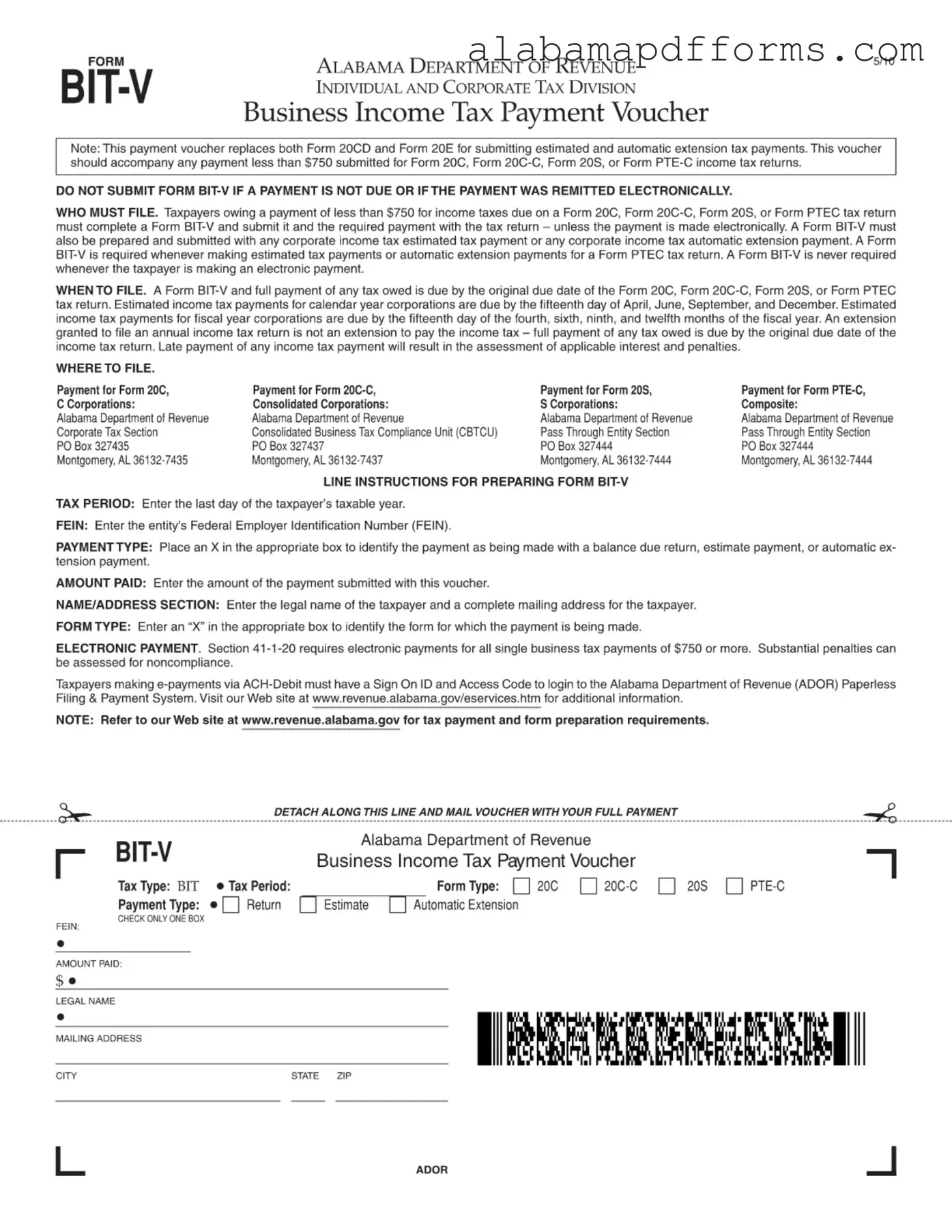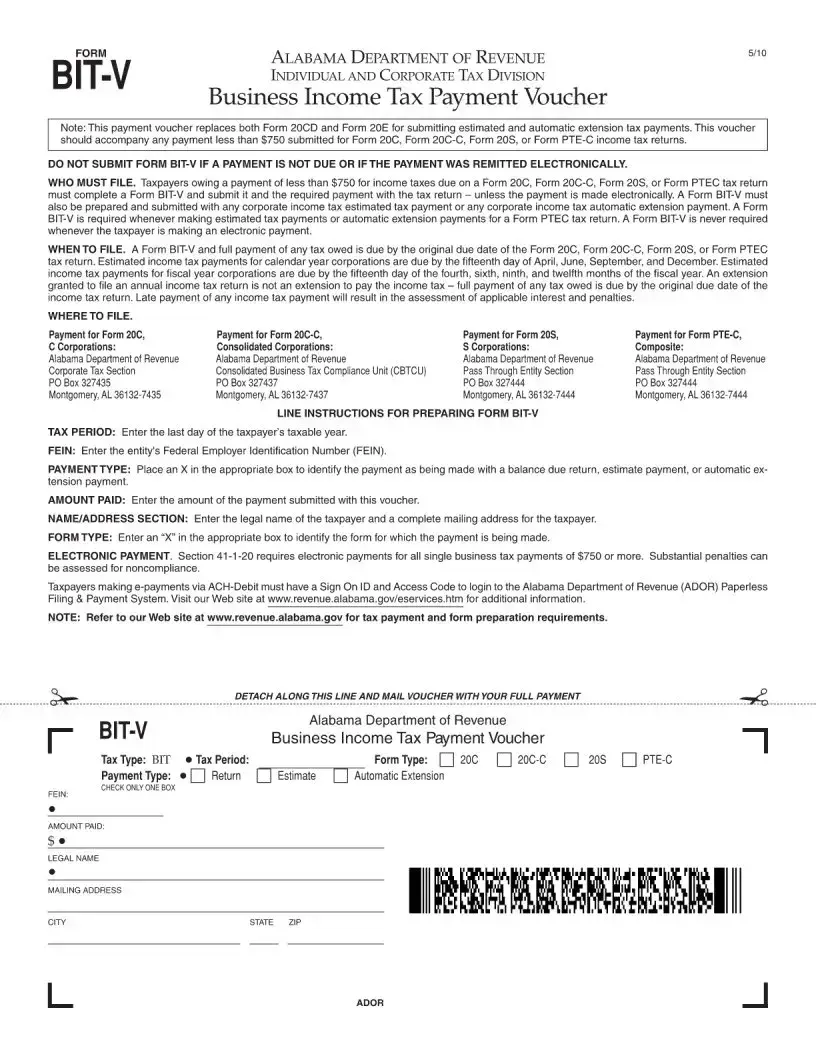The Form 1040-V is similar to the Bit V Alabama form in that it serves as a payment voucher for individual taxpayers submitting their federal income tax returns. Like the Bit V, it is used when taxpayers owe a balance and need to submit a payment along with their return. The 1040-V must be included with the payment, ensuring that the IRS can accurately apply the payment to the taxpayer’s account. Both forms emphasize the importance of submitting the payment by the original due date to avoid penalties and interest.
The Form 4868, the application for an automatic extension of time to file an individual income tax return, shares similarities with the Bit V form. While the Bit V is used for making payments, the 4868 allows taxpayers to extend their filing deadline without extending the payment deadline. Both forms require careful attention to deadlines, as failing to pay taxes owed by the original due date can lead to penalties. The 4868 also highlights the necessity of filing the form even if no payment is due, while the Bit V is only necessary when a payment is owed.
The Form 941-V, which is a payment voucher for employers submitting their quarterly payroll tax returns, resembles the Bit V in its function of facilitating payment processing. Both forms require the taxpayer to indicate the type of payment being made, whether it is a balance due or an estimated payment. The 941-V ensures that payments are correctly attributed to the appropriate quarter, just as the Bit V ensures payments are linked to the specific tax returns being filed. Timeliness is crucial for both forms to avoid penalties.
The Form 1120-W is used by corporations to make estimated tax payments and is similar to the Bit V in that it addresses estimated payments for taxes owed. Both forms require taxpayers to calculate their payments based on expected tax liabilities. The 1120-W is specifically designed for corporations, while the Bit V caters to various business entities. Both emphasize the importance of making timely payments to avoid interest and penalties, reinforcing the need for accurate tax planning.
The Form 990-T, used by tax-exempt organizations to report unrelated business income, has similarities with the Bit V form in terms of payment requirements. Organizations must file this form when they owe taxes on unrelated business income, and it includes a payment voucher section. Like the Bit V, the 990-T requires attention to detail in reporting and payment to avoid penalties for late submissions. Both forms reflect the obligation to meet tax responsibilities even when the entity is generally exempt from income tax.
Understanding the various forms used for estimated tax payments is crucial for compliance, much like the importance of a Hold Harmless Agreement in managing liabilities during activities that carry risk. Each form, whether it's the Bit V, IRS Form 1040-ES, or state-specific versions, serves to streamline payment processes and reinforce the need for accurate records. By grasping the purpose and requirements of these forms, taxpayers can ensure timely submissions, avoiding unnecessary penalties and fostering clarity in their financial responsibilities.
Lastly, the Form 720 is a quarterly federal excise tax return that includes a payment voucher. It is similar to the Bit V in that it provides a mechanism for taxpayers to submit payments related to specific tax liabilities. Both forms require taxpayers to provide identifying information and the amount of payment due. Timeliness is crucial in both cases, as late payments can result in significant penalties. The Form 720 emphasizes the importance of compliance with federal excise taxes, paralleling the Bit V’s focus on state business income taxes.

